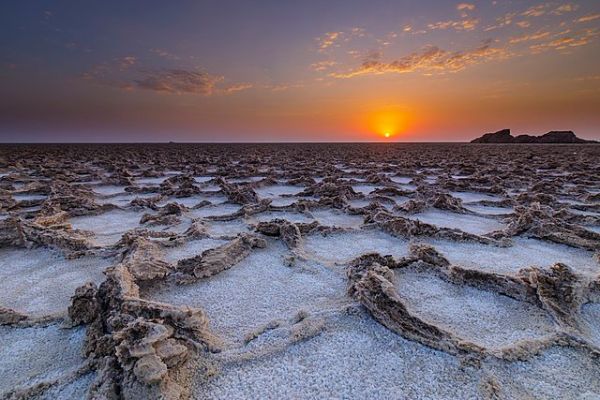I have not produced a video titled Means of Extinction since 30 July 2021. At that point, I had identified six means by which we were rapidly driving ourselves to extinction.
Due to the rate of environmental change in our wake, and also the uncontrolled meltdown of nuclear power plants, any one of these means of extinction will lead to the extinction of all life on Earth. Nearly three years after I reported six phenomena by which we are driving ourselves to extinction in the near term, two additional means have appeared. I’ll report on one of them with this short video.
According to an article at SciTechDaily, humans are disrupting the planetary salt cycle, thus causing an existential threat. The article was published 2 November 2023. It is titled An “Existential Threat” – Humans Are Disrupting the Natural Salt Cycle on a Global Scale. The subhead is “A research group headed by a geologist from the University of Maryland warns that the influx of salt in streams and rivers is an ‘existential threat.’”
Here’s the opening paragraph: “The planet’s demand for salt is not without its toll on both ecological systems and human well-being, according to a new scientific review led by University of Maryland Geology Professor Sujay Kaushal. Published in the journal Nature Reviews Earth & Environment, the paper revealed that human activities are making Earth’s air, soil, and freshwater saltier, which could pose an ‘existential threat’ if current trends continue.”
Here’s the buried lede, in the following paragraph: “Geologic and hydrologic processes bring salts to Earth’s surface over time, but human activities such as mining and land development are rapidly accelerating the natural ‘salt cycle.’ Agriculture, construction, water and road treatment, and other industrial activities can also intensify salinization, which harms biodiversity and makes drinking water unsafe in extreme cases.” As you can probably guess, human activity has intensified salinization to the point of qualifying as an extreme case.
The article in SciTechDaily indicates that we have disrupted not only sodium chloride, but also other salts, including ones related to limestone, gypsum, and calcium sulfate. As a result, about 2.5 billion acres of soil around the world have been affected. That’s about a billion hectares, an area about the size of the United States. The disruption has occurred, and is occurring, in streams and rivers in addition to soil. It has become particularly obvious during the last 50 years.
But wait: It gets worse. Salts have even infiltrated the air. As lakes dry, largely as a result of human activity, the dried lakes send plumes of saline dust into the atmosphere. In areas that experience snow, road salts become aerosolized.
Even worse, salt in the atmosphere accelerates the melting of snow. In areas that depend upon this snow for their water supply, such as the western United States, entire communities can be harmed by the disrupted salt cycle.
I’ll turn now to the peer-reviewed paper, written by 13 scholars and published in Nature Reviews Earth & Environment. Titled The anthropogenic salt cycle, the paper was published 31 October 2023. I will read from the Abstract: “Increasing salt production and use is shifting the natural balances of salt ions across Earth systems, causing interrelated effects across biophysical systems collectively known as freshwater salinization syndrome. In this Review, we conceptualize the natural salt cycle and synthesize increasing global trends of salt production and riverine salt concentrations and fluxes. The natural salt cycle is primarily driven by relatively slow geologic and hydrologic processes that bring different salts to the surface of the Earth. Anthropogenic activities have accelerated the processes, timescales and magnitudes of salt fluxes and altered their directionality, creating an anthropogenic salt cycle. Global salt production has increased rapidly over the past century for different salts, with approximately 300 metric tons of NaCl [sodium chloride] produced per year [that’s about 331 tons in the American system]. A salt budget for the USA suggests that salt fluxes in rivers can be within similar orders of magnitude as anthropogenic salt fluxes, and there can be substantial accumulation of salt in watersheds. Excess salt propagates along the anthropogenic salt cycle, causing freshwater salinization syndrome to extend beyond freshwater supplies and affect food and energy production, air quality, human health and infrastructure. There is a need to identify environmental limits and thresholds for salt ions and reduce salinization before planetary boundaries are exceeded, causing serious or irreversible damage across Earth systems.”
As indicated by the article in SciTechDaily, serious and irreversible damage is well underway. I have often pointed out that science is often a process of elucidating the obvious. This appears to be yet another case.
Author
"Dr. Guy McPherson is an internationally recognized speaker, award-winning scientist, and the world’s leading authority on abrupt climate change leading to near-term human extinction. He is professor emeritus at the University of Arizona, where he taught and conducted research for twenty years. His published works include 14 books and hundreds of scholarly articles. Dr. McPherson has been featured on TV and radio and in several documentary films. He is a blogger, cultural critic, and co-host of his own radio show “Nature Bats Last.” Dr. McPherson speaks to general audiences across the globe, and to scientists, students, educators, and not-for-profit and business leaders who seek their best available options when confronting Earth’s cataclysmic changes." source








